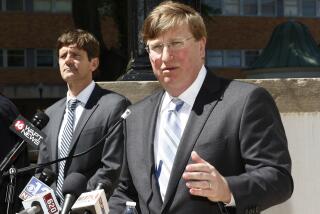U.S. pushes healthcare providers to share records electronically
- Share via
Hospitals and doctors have received billions of dollars in government subsidies to upgrade electronic health records, but they have not done enough to make those records shareable, a top federal health official said.
Farzad Mostashari, national coordinator for health information technology at the U.S. Department of Health and Human Services, said Friday in Los Angeles that the government is proposing that medical providers have the capability for exchanging patient data by 2014.
“Is this doable? Is this too aggressive? We don’t think patients can wait,” he told a meeting of employer, consumer and medical group representatives. “We can’t wait five years.”
In 2009, the federal government began spending more than $27 billion to help doctors and hospitals computerize the healthcare system buried in paper. The aim was to improve care by giving medical providers in a variety of settings instant access to vital patient information, and to help control costs by eliminating unnecessary and duplicative tests and procedures.
Some critics say that billions of dollars being spent on electronic records are for poorly designed software and systems that in many cases can’t communicate with one another.
The ability to easily share information is crucial for many of the benefits of electronic medical records to materialize. Major companies such as General Electric Co. and Microsoft Corp. as well as a host of smaller software firms are all attempting to seize on this massive technology investment.
Mostashari noted that significant progress has been made in terms of doctors and hospitals adopting digital records and performing basic functions such as sending prescriptions electronically.
But he said that as of 2010 — the latest records he cited — only 19% of hospitals could share patient information electronically with outside physicians. He said 73% of primary-care doctors don’t receive information about their patients being discharged from the hospital within two days.
Many hospitals and doctors have long been unable or unwilling to share patient records outside their own organizations because of incompatible technology or for competitive reasons. The federal government is working with medical groups and technology vendors to form a consensus on technological standards and policies.
Donald Crane, president and chief executive of the California Assn. of Physician Groups, said the government must also proceed on reforming how medical providers are paid so that coordination of care is rewarded. Crane said about half of medical payments still follow a traditional fee-for-service model that doesn’t encourage coordinated care among providers.
Mostashari said he agreed that payment reform must occur in conjunction with this digital push so doctors have the right financial incentives. His federal office has been issuing grants to community groups across the country to assist smaller medical practices with technology issues.
“Most doctors didn’t go to medical school to be an IT project manager,” he said.
David Lansky, chief executive of the Pacific Business Group on Health, a nonprofit coalition that represents major employers such as Walt Disney Co. and Chevron Corp., said he welcomed the government’s aggressive timeline because companies can’t keep paying for a fragmented healthcare system.
“We are becoming impatient too,” he said. “We only have two to three years to get to the top of this hill.”
Mostashari said that in the meantime, patients should take matters into their own hands.
“It is time for patients to ask for copies of their electronic medical record and download them,” he said. “We do it for every other aspect of our lives but healthcare.”
More to Read
Inside the business of entertainment
The Wide Shot brings you news, analysis and insights on everything from streaming wars to production — and what it all means for the future.
You may occasionally receive promotional content from the Los Angeles Times.











